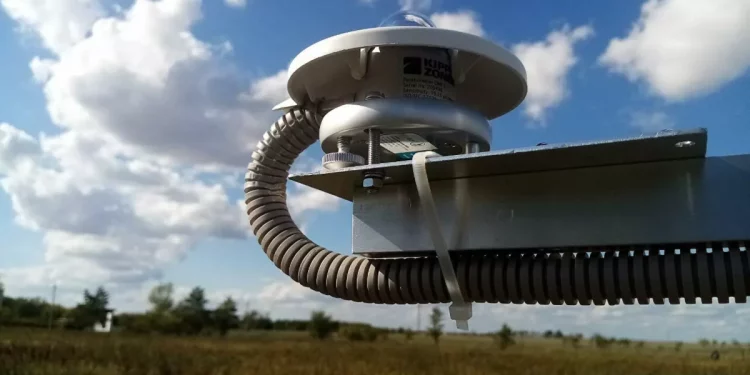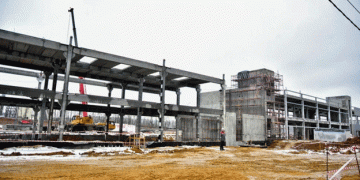It will be possible to preserve and increase soil fertility with the help of weather forecasting. For this purpose, an international team of researchers from the REC “Greater Altai” of Altai State University and the Research and Production Center for Grain Farming. A.I. Baraeva (Kazakhstan) jointly developed a service that automatically analyzes materials from weather stations. The information received, according to experts, will help agricultural producers adapt to specific conditions and develop modern farming methods. The productivity of such enterprises will have an impact on the economy and well-being of the country, scientists say. The developers have announced this.
Negative trends
According to scientists of Kazakhstan, in recent years the climate in the country has changed – spring and summer have become hotter, and spring is windier. In addition, experts note a shift in the distribution of winter and summer precipitation. The first half of the winter became little snowy, and the rains needed by the fields in June now come later. All this negatively affects productivity, animal husbandry and crop production.
Automatic weather station for studying the agroclimate – Sputnik Kazakhstan, 1920, 06/14/2022
Automatic weather station for studying the agroclimate
“For the last decade, we have been observing a sharp change in climatic conditions. This is due to a change in the strategy of technological work of agronomists. They need to be adjusted in new weather conditions. Such a sharp climate change is a modern challenge that will greatly affect the economies of countries,” said the head of the laboratory of adaptive and agrolandscape technology of the Research and Production Center for Grain Farming. Baraeva Kanat Ashkalov.
According to him, the decline in soil fertility can be aggravated with climate change and lead to the loss of agrobiodiversity, deterioration of the water regime of soils and plants. The climate forecast will make it possible to plan conservation agriculture to preserve and improve soil fertility.
Scientists from the Great Altai Scientific and Educational Center for Altaic and Turkic Studies of Altai State University (AltSU) have developed a computer program that collects data from weather stations over the past 80 years and evaluates climate changes in a couple of minutes.
In testing mode, scientists have already processed data from 840 weather stations in the Greater Altai and Central Asia, including those in Kyrgyzstan.
“As a result of the software operation, we receive a complete set of data and evaluate climate changes, in particular, the expected change in the average annual temperature and precipitation per 100 years,” said Elena Ponkina, one of the developers of the program.
The product was created within the framework of the project “The Turkic World of the Great Altai: Unity and Diversity in History and Modernity” with the support of the Ministry of Science and Education of Russia and, according to the developers, will be useful to colleagues from Asian countries.
The art of farming
As scientists note, such analytics can be performed for any selected territory. You only need to prepare a list of weather stations for which you need to download and process data.
“Now we are monitoring climate change in different climatic zones of Kazakhstan. Based on these patterns, recommendations will be made for individual territories – this will give agricultural organizations a basis to plan strategies and tactics in agriculture,” explained Kanat Ashkalov.
According to him, if you know the patterns of weather changes, wind conditions or be able to prevent the occurrence of frosts, it will be possible to place crops on the land use area, where they can respond positively to weather changes. These can be moisture-loving crops, and those that can withstand drought and heat. In addition, data on the climate in individual areas will help breeders in creating plant varieties that can withstand the vagaries of the weather.
“We continue to work on the development of the program, in particular, we are developing a number of special procedures for predicting climate change and zoning the territory, for example, according to the degree of climate aridity, which is very important for the countries of Central Asia,” Elena Ponkina shared her plans.
Climate and economy
Scientists believe that the project affects the interests of the entire Eurasian continent. Weather conditions in one of the countries, affecting such large areas as agriculture or animal husbandry, also leave a mark on trade and economic relations. For example, if the harvest is smaller, there may be a shortage in the market and, as a result, prices will rise. In addition, these data will help in the study of global climate change. The arable land of Kazakhstan has the potential to store carbon, which is important to consider in connection with the threat of global warming.
“Climate data allow us to get to the topics of global warming and carbon balance. Working with data from weather stations in Central Asia, for example, we saw that, in general, the general warming trend is confirmed, but there are regional differences that are associated with the location of weather stations. weather stations – of course, their own specifics,” explained one of the developers, Associate Professor of the Department of Economic Geography and Cartography of Altai State University Andrey Bondarovich.
According to the creators, the program will also be used in teaching meteorological, agronomic and geographical specialties to students. Currently, in Kazakhstan, they study from old textbooks, on the pages of which the climate is described as more stable. In order to prepare future specialists and provide the country with qualified personnel, students will be trained in the analysis of real weather conditions.
The development team also included a student of Altai State University Kirill Rupasov and a PhD doctor of the East Kazakhstan University named after S. Amanzholov Aliya Nugumanova.






